I’m lost.
I started my career in sustainability for my friends and family, especially for their children. I had a desire to create a planet to enjoy, not one where they have problems breathing from air pollution, or can’t go outside during the summer because it’s too hot. I felt my goal was simple—a better planet for future generations.
Selfishly, because I want an Earth where I can ski, where I can go rafting, and where I can explore nature and all its creatures, I revised my goal. If there’s no snow, or our rivers have dried up, or all the trees are cut down, I will have no playground to have fun. My new goal: a better planet for activity, nature, and future generations of all species. For a long time, I believed I was making the right choices in this endeavor by helping to design green buildings. And the statistics seemed to confirm my thinking.
There was a successful connection of the sustainability and environmental movements with legislation, from 1969’s The National Environmental Policy Act to the adoption of the 1987’s Brundtland Report into the UN’s Sustainable Development Goals.

The UN’s Millenium Development Goals were revised into the Sustainable Development Goals, with 17 goals and 169 targets to stimulate action until 2015 in areas of critical importance: people, planet, prosperity, peace, and partnership, a combination of goals, cross-sectional engagement, and people. In September 2015, the 193 countries of the UN General Assembly adopted a new development agenda, Transforming our world: the 2030 Agenda for Sustainable Development. The interlinkages and integrated nature of the Sustainable Development Goals are of crucial importance in ensuring that the purpose of the new Agenda is realized. If the ambitions are realized across the full extent of the Agenda, the lives of all will be profoundly improved and our world will be transformed for the better.
In October 2015, Germany committed more than €2 billion to support solar energy and green infrastructure in India. In 2014, ‘the biggest solar field west of Ontario’ broke ground on a contaminated mine site in Canada, and the Abu Dhabi-based Masdar Group recently committed to expanding its clean energy development in the MENA region.
In 1993, the U.S. Green Building Council was founded and upon celebration of its 20th anniversary, their annual report highlighted numbers that indicated substantial growth for the sustainable building movement—12,758 member organizations, 196,537 LEED accredited professionals, and over 1.5 million square feet of certified space. With over 80 rating systems targeting sustainable planning strategies for neighborhoods and cities, the design professionals and developers had their pick of solutions and avenues to create a sustainable reality.
At COP 21 in Paris, attendees and global leaders shared in exhibits, speeches, and events to find universal solutions for energy reduction. One powerful art installation that summed up the urgency for these measures was Ice Watch Paris. In the display, created by Olafur Eliasson and Minik Rosing, 12 blocks of ice harvested as free-floating icebergs from a fjord outside Nuuk, Greenland, were arranged at the Place du Panthéon to show visitors the impact our actions are having on the planet—the alarming rate at which our natural air conditioning was, in fact, melting.


Logically, I was feeling justified in my actions. I was using my professional talents and my passion for the environment to guide my career, and, in turn, was doing something good for the planet.
Why, then, was I waking up in the middle of the night in a panic that it wasn’t enough? That I wasn’t making an impact, that I wasn’t fulfilling my ideals. With all this increasing buzz and momentum, had the sustainability movement actually lost me? Was everything so focused on numbers, political relationships, elections, and providing answers, it forgot those of us who believed in working together? In widespread collaboration? In individuals making a difference?
During these late nights, I started researching and reading, hoping to find further information that would help me re-achieve my sense of purpose and my sustainable story. What I found was the opposite.
I searched the Internet for anything to give me hope. Instead, upon my searching I found an article published by the Sydney Morning Herald, Green Buildings Failed by Follow-Up, citing expert Roderic Bunn and his message that “most buildings with high environmental ratings don’t function as well as promised.” Buildings are becoming too complex in design and in operation, ultimately failing to fulfill on their sustainable promise. Was my work being reduced to merely a point total and scorecard? Something that looked nice but wasn’t delivering on the intended outcome?
My searches brought up a multitude of pictures of human impact on the planet. Having worked and lived in Canada, I was aware of the Alberta Oil Sands, but I didn’t realize they are the largest oil sands in the world. Granted, oil prices are at their lowest since 2009, and with the change in leadership in Canada last year, people with a history of protesting oil operations in the tar sands have stopped being targeted for their public disagreement. But the figures (it takes 6 barrels of water to produce 1 barrel of clean oil from the oil sands) and facts (by comparison, the size of the oil sands would cover a third of Germany’s land mass) are nightmarish.

According to the World Economic Forum and the Ellen MacArthur Foundation, the oceans will contain more plastic than fish by 2050. The Great Pacific Garbage Patch is estimated to range in size from 700,000 square kilometres (about the size of Texas) to more than 15,000,000 square kilometres (from 0.41 percent to 8.1 percent of the size of the Pacific Ocean), or, in some media reports, up to “twice the size of the continental United States.” Research by Greenpeace and the United Nations Environment Programme has shown that this plastic marine debris affects at least 267 species worldwide. So much for SCUBA diving, let alone eating fish or enjoying a nice swim in the ocean.

I looked at my eating, too, and the impacts of my diet on the environment. In information about human impacts on the forests of Borneo, the World Wildlife Foundation reports that satellite studies show that approximately 56 percent of protected lowland tropical rainforests had been cut down by 2001 to supply global timber demand in an area more than 29,000 square kilometres (almost the size of Belgium). The biggest reason for this clear cutting? Our need for palm oil, which is found in half of our household products, including Nutella, Cheez-Its, and Snyders Pretzels. This single vegetable oil is also found in the United States, Canada, Australia and England in our shampoo, our cosmetics, and many of our cleaning products, such as detergent and toothpaste.
I felt more disconnected than ever. Everything I ate or did, even if I was trying to be environmentally conscious, was impacting the planet at an alarming rate.
Thomas Berry, a Catholic priest, cultural historian, and self-described “Earth scholar,” believed that humanity is poised to embrace a new role as a vital part of a larger, interdependent “communion of subjects” on Earth and in the universe. While we can and will change, the transformation of humanity’s priorities will not come easily. It certainly wasn’t coming easily for me. After years of thinking I was walking the walk, I was in trouble. I needed to find my story, but I didn’t have a good one.
But what was my new story?
“People don’t buy what you do. People buy why you do it,” says Simon Sinek. In Sinek’s TED Talk, How Great Leaders Inspire Action, he cites Apple and their well-known innovative products; Martin Luther King, Jr., and his persuasiveness in leading the civil rights movement; and the Wright brothers and their success in controlling powered flight. He links these through what he calls The Golden Circle. He highlights that people follow and are inspired by the “Why” of a company or a leader, not what they do or how they do it. A result—like resolving climate change—is my goal, but what is my purpose, my cause, my belief? Why do I get out of bed in the morning, and why should anyone care?
I found a book, “Original Green,” that includes historic, holistic approaches to life, forethought for the future, and ways to support the planet’s flora and fauna. It highlights how humans should be able to eat, access, serve, feel secure and loved, and have the ability to adapt to our sustainable surroundings. For me, sustainability is not only about green buildings and development, but about recognizing society’s impact on and healing capabilities for global climate change, the protection of nature and its inhabitants from abundant and detrimental use of resources, and the commitment to successful collaboration.
To achieve these things, I didn’t need to be able to afford a certified home or the latest technology. I didn’t need to believe a celebrity endorsement of a Tesla. All the press and money wasn’t going to change the impact of grassroots protests and action. My story had hit a rough patch, and instead of charging ahead, I was hiding behind what I know. Humans are the variable scaring me—the same people seem to make the same speeches to the same audience. New faces are few and far between.
But I had proof that things were changing. I saw the strategic partnerships and political relationships. The challenge, now, is making people believe in individual impact and behavioral change. As former Uruguay president, José Pepe Mujica, said, “if we lived within our means—by being prudent—the 7 billion people in the world could have everything they needed. Global politics should be moving in that direction. But we think as people and countries, not as a species.”
I had manifested a reality based on competition for being the best certified building, the first and most innovative. In the process, I had lost sight of my core values and outcomes. Instead of looking at the changes required to make a sustainable future, I looked at my point tally and an award to validate my sustainable success: monetizing an environmental footprint, verifying a percentage of energy efficiency based on a third party assessment, or celebrating a project being awarded petal certification. My concrete tallies provided me benchmarks that many still did not understand, but allowed me to find temporal meaning in my work. What did it really mean? Perhaps nothing but numbers.
I am looking to our sustainability professionals and organizations to become the true leaders I believe we are, but this will only come from self-reflection and willingness to retake the reigns. As McKinsey & Company noted in a 2007 publication, “The CEO helps a transformation succeed by communicating its significance, modeling the desired changes, building a strong top team, and getting personally involved.” Let’s stop patting ourselves on the back for the small accomplishments in a movement that has been in existence for over 30 years, and spotlight individual success for people to relate to, to expand our impact. Instead of inundating the market with rating system after rating system, let’s inspire and work together to make impactful change.
In my moment of new beginning, I implore those reading this to place our collective values and goals on the line. Our chance is now to create real change: an all-inclusive, global, sustainable community.
Miranda Gardiner
Frankfurt
About the Writer:
Miranda Gardiner
Miranda Gardiner is a sustainability expert and San Francisco native who continually volunteers her time to bettering the planet and its inhabitants. She is currently a Bosch Fellow in Frankfurt, Germany.

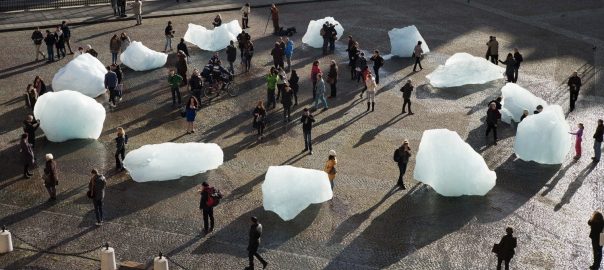
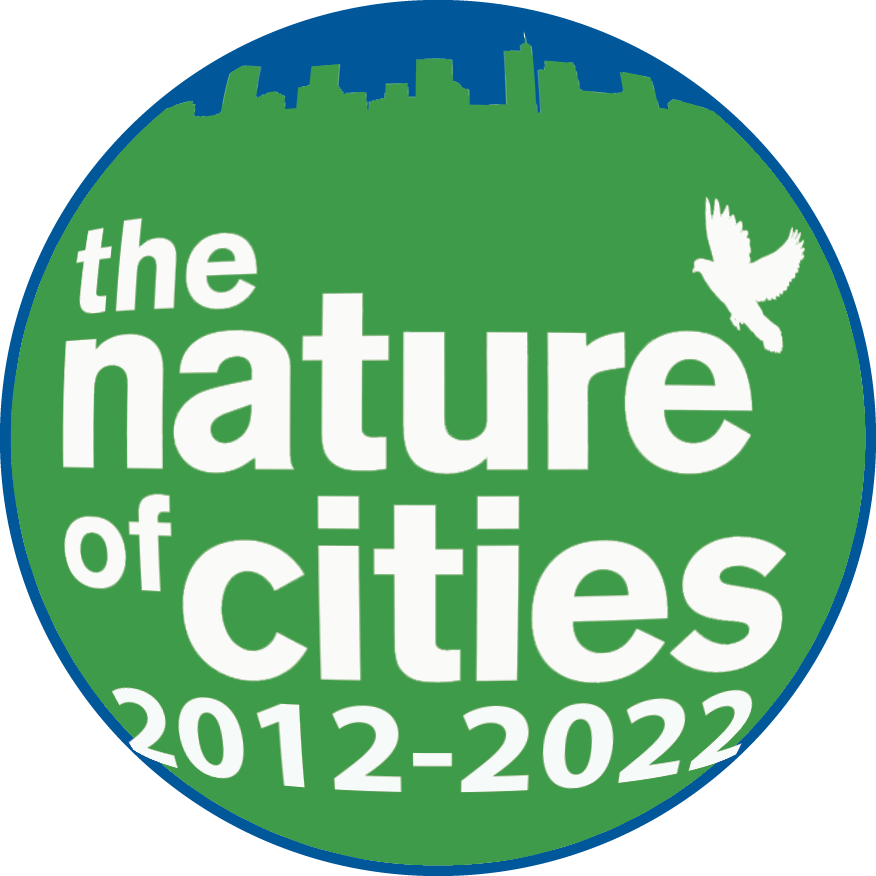






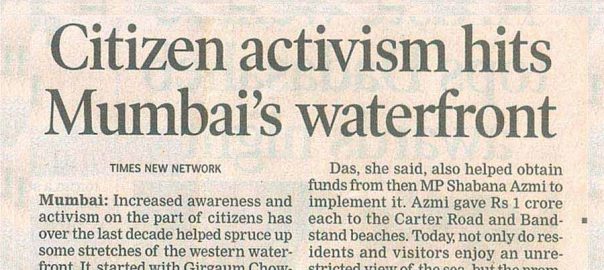
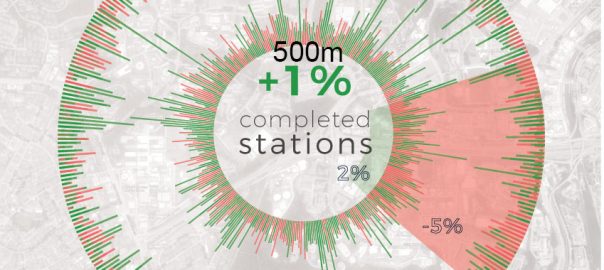
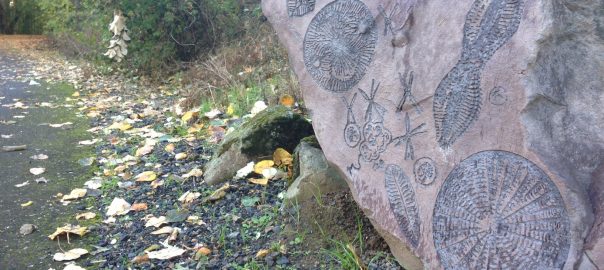
Thanks Whit – we do have a lucky life working with the changemakers we know!
Hi Erin….thank you for your comment – and, yes, I would be interested in this. Drop me an email and we can go from there: [email protected]
Hi Miranda!
I am an MS Sustainability Management candidate at Columbia University, and I wanted to get in touch with you regarding setting up a discussion with you about this essay. I really connected with your position and was wondering if I could ask you a few questions! The ultimate purpose of this discussion would be to develop a 10 minute podcast that would serve as my term project for a course that I’m enrolled in. If this sounds like something you would be interested in, please message me & we will figure out the details!
Best,
Erin
My money is on you! and all the other brilliant people you and I were lucky enough to work with (and their friend’s friend’s friends) who are now spread around the US and world bringing a renewed sense of purpose and understanding. The good news is that time is on your side. We get older more quickly than we realize. You keep grabbing the best of what can be learned and know that the old ways and ideas that stand so solidly in the way today will stoop and shuffle aside (right when you and your peeps are hitting your stride). It’s already begun.
I recently participated in a panel where our goal was to discuss how to further engage experts into cross-collaborative discussions that could lead to change. We agreed that too many critical needs are siloed rather the strategically partnered together, to make quicker, successful Impacts.
If we put down our camera phones and put away our tablets more often, I believe that connection you note is missing could be reestablished.
And yes to a gamification-biomicry conference. How do we make this happen?
Larry, we’ve known each other for a long time and your opinions mean a great deal to me. Thank you for the insight and words of encouragement….as well as your committment and work with the sustainability movement!
It’s great to engage new participants to this dialogue….that was part of my goal, so thanks for reading and viewing the pictures.
I highly recommend watching the documentary, Revolution (https://therevolutionmovie.com/), to get an even broader understanding of these issues. Some of the visuals and statistics are a bit frightening but others are quite inspiring, especially all the young people that are interviewed and engaging their voices to act in their communities.
Miranda,
Good, thoughtful article. I agree with Paul Downton’s points about our system being fundamentally at odds with sustainability, which is why your work and your points here are so important. Years ago you introduced me to Paul Hawken’s Ecology of Commerce and his attempt to define a cyclical material use within a corporate “growth” model (I object to corporate increases being called growth, strikes me as a misappropriation of a term for organisms that has little to do with corporate production). At a time when people interact with devices and not the natural, it can be difficult to foresee a broad enough change in thinking to see a consequent change in behavior from the personal to the corporate level. Would be interesting to see gamification folks hold a joint conference with the biomicry leaders. That corporations and governments need people with your sensibility to lead the way out of destructive behavior and orientation.
Hi Miranda. Thanks for sharing. I have a few kind of dis-jointed thoughts.
first, we will always be dis-appointed in the accomplishments of governmental or quasi government units. UN, Federal gov’ts, even the USGBC. The “leaders” are primarily political and interested in self-preservation, and do establish rules that often prevent the passionate change agents within to realize their potential.
You are a leader. Leaders offer a vision of and hope for a better future a better world, but often hit periods were they feel like no one is following. This is normal, part of the process of change. Never, ever give up.
I think you are questioning your cause, not your purpose. If we each get out of bed with the purpose of touching another human being in a positive way everyday, the world will be better, it will be enough. A smile, a word of encouragement, an inspiring thought or example. you’ve done good today by evidence of the comments above.
Super interesting reflections, Miranda, thanks for articulating your personal struggle with walking the walk and enlightening some of us others about the issues.
Ps. I had never seen a proper picture of the Tar Sands and it looks so scary. 🙁
There are so many opportunities for us to create better ways – and if we all committed to small improvements, I know we can make a difference. But that itself is a challenge, with the thoughts of ‘I’m only one person’ or ‘this isn’t enough’ paralyzing us to inaction.
I am hopeful that this can be remedied and we can overcome our excuses and act. We can change but it isn’t going to be easy or a quick fix.
I couldn’t agree more. Thank you for your insightful and heartfelt piece. I can’t help feeling that the capacity to effect the change we need to make exists, if only we could make the collective, global commitment to do so. We can scale back our material demands and we can develop and implement the needed technology, if we put the best minds on the job. It’s attainable — we just need to collective will to move forward. My heart sank when the Supreme Court issued a stay on the implementation of coal regulations. I understand some of the concerns, but we have to recognize the need for action as the emergency that it is.
Thanks for the suggestion – I will check this book out.
I’m currently finding interesting commentary (and Inspiration) in Naomi Klein’s latest, ‘This Changes Everything: Capitalism Vs. The Climate’, as well as Angus Deaton’s ‘The Great Escape: Health, Wealth, and the Origins of Inequality’.
One more keeping me motivated is ‘The No-Nonsense Guide to Green Politics’. Another debate for another time but I believe that expanding US politics to a truly multiple party system would help shape better future outcomes.
Thanks, Manuela – I appreciate the support and hope others read this the way you did, as a take away to make strides in their own lives and that only a universal collaboration will provide for a successful, sustainable future!
Paul, I couldn’t agree with you more! We’re walking a fine line that needs to be extended and pushed, but to what extent and to where? As you noted, and it seems to me as well, it has become a practice of my job to tow the party line to keep one’s job.
How to we modify the constraints to create real change?
I feel we’ve made extensive progress from where we were 20, 40 years ago in buildings, in environmental practices, etc., yet now we’re celebrating the fruits of our labor a little too soon….there is still work to be done – and quite a lot of it.
Thank you, Jorge!
We all need role models in seeking a meaningful way to contribute to the changes in culture that will guide our actions. To provide hope when we can only feel despair. Have you come across Robin Wall Kimmerer’s ‘Braiding Sweetgrass’? It’s one book that I keep on my table.
Excellent MIranda…….I am proud of your efforts and would like for all individuals to participate even in a small way to better our environment. M
An excellent piece, Miranda, I can feel your angst! And I agree with the overarching goal of an all-inclusive, global, sustainable community – in principle. But what does that mean? The ‘sustainability professionals’ can only lead in the context of the frameworks that they work within, and therein lies a problem or two. All the current frameworks are beholden to an economic system that requires continual growth and as any sustainability expert knows, growth cannot be sustained. So there are inherent contradictions in working for sustainability within a system that has, at its root, a profoundly unsustainable set of assumptions about how the world works.
To put it another way, professionals work for a growth economy, but if they’re not prepared to confront the fundamental values of that economy they can’t work towards real sustainability. If they do confront it, they’re likely to be out of work in short order.
Meanwhile, individual impact and behavioural change are constrained by the market. If people go beyond the boundaries of what is allowed, that’s illegal behaviour, by definition.
The crisis of the biosphere is generated by a set of insane beliefs that are sustained by the social and political ineptitude of a species that has grown clever, but not wise.
Maybe that’s where you’re getting to. Clever has got us into trouble. Now we need to get wise. We need to get together to shift the dominant paradigm.
And it won’t be computer algorithms that get us there or, as you might say, we won’t know whether we’re wise by tallying points on a scoresheet.
In braver times, they called it revolution.
Just don’t expect it to be nice.
Inspiring article!